
本文基于Rxjava 2.x版本,介绍用于 Observable 过滤发射项目的操作符。
Operators that selectively emit items from a source Observable.
Debounce — only emit an item from an Observable if a particular timespan has passed without it emitting another item
如果特定的时间跨度已经过去而没有发出另一个项目,则只从Observable中发出一个项目
Distinct — suppress duplicate items emitted by an Observable
过滤重复发射源
ElementAt — emit only item n emitted by an Observable
仅发出方法中指定的发射源
Filter — emit only those items from an Observable that pass a predicate test
仅发出符合过滤条件的发射源
First — emit only the first item, or the first item that meets a condition, from an Observable
仅保留发射序列的第一个发射源
IgnoreElements — do not emit any items from an Observable but mirror its termination notification
忽略发射序列的所有元素,只会响应 onComplete 方法
Last — emit only the last item emitted by an Observable
仅保留发射序列的最后一个发射源
Sample — emit the most recent item emitted by an Observable within periodic time intervals
取每个时间周期内的最后一个发射源。
Skip — suppress the first n items emitted by an Observable
跳过起始位置的 n 个发射源
SkipLast — suppress the last n items emitted by an Observable
跳过终点位置的 n 个发射源
Take — emit only the first n items emitted by an Observable
保留起始位置的 n 个发射源
TakeLast — emit only the last n items emitted by an Observable
保留终点位置的 n 个发射源
debounce 操作符
当发射源 Emitter#onNext 方法发射间隔小于 debounce 方法指定间隔,取时间间隔有交集的最后一个发射源。在当前指定时间周期内只有一个发射源的时候,直接发出该发射源,如果指定时间周期出现多个发射源,取周期内最后一个发射源发出,其他的发射源过滤掉。根据下面的 debounce 图解可以得知,debounce 周期随发射源发出开始计算。注意和 sample 操作符区别
1 | // Diagram: |
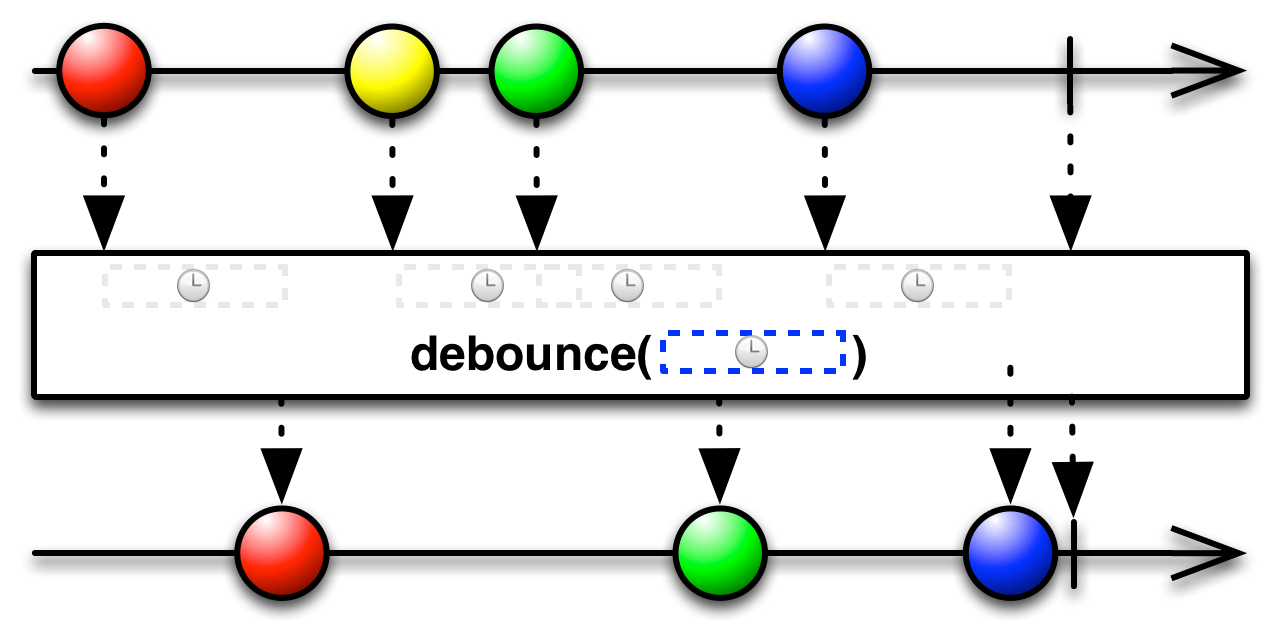
distinct 操作符
过滤重复的发射项目
1 | Observable.just(2, 3, 4, 4, 2, 1) |
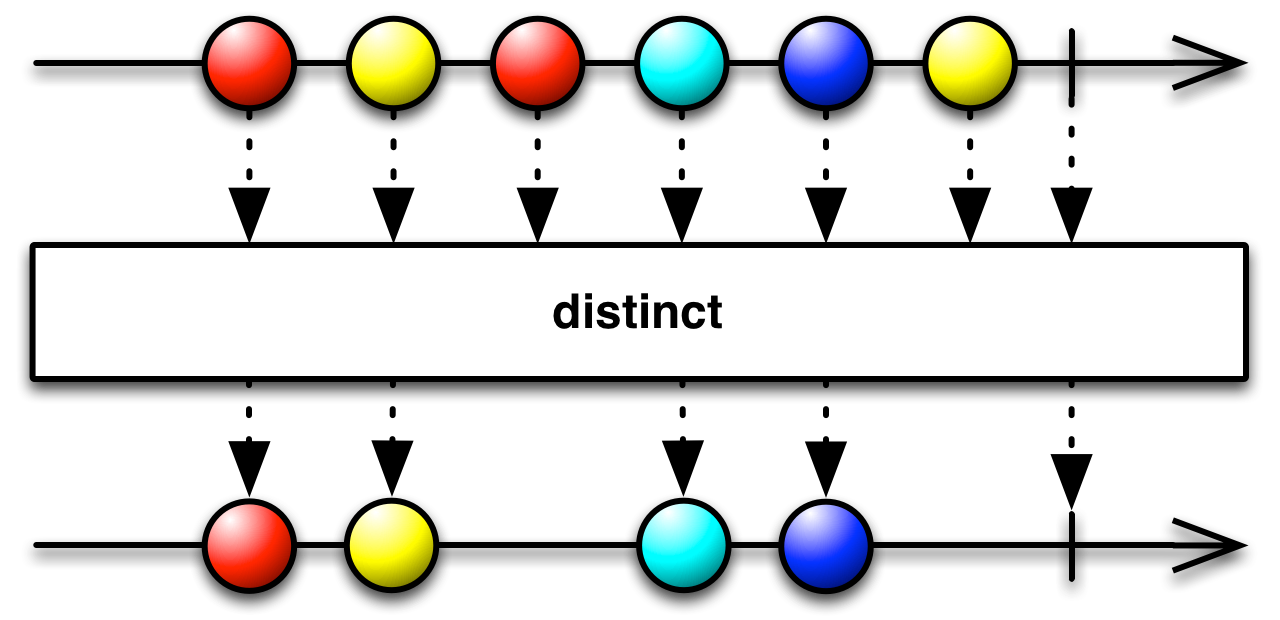
elementAt 操作符
获取指定发射序列上某条数据
1 | Observable<Long> source = Observable.<Long, Long>generate(() -> 1L, (state, emitter) -> { |
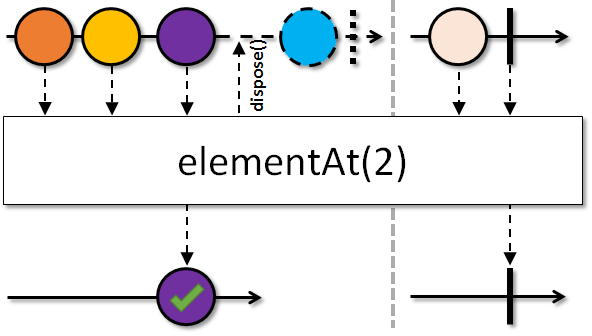
filter 操作符
过滤非函数判断指定的发射序列
1 | Observable.just(1, 2, 3, 4, 5, 6) |

first 操作符
取发射序列的第一个发射源,和 last 操作符对应。first 方法中参数为指定默认值。
1 | Observable<String> source = Observable.just("A", "B", "C"); |
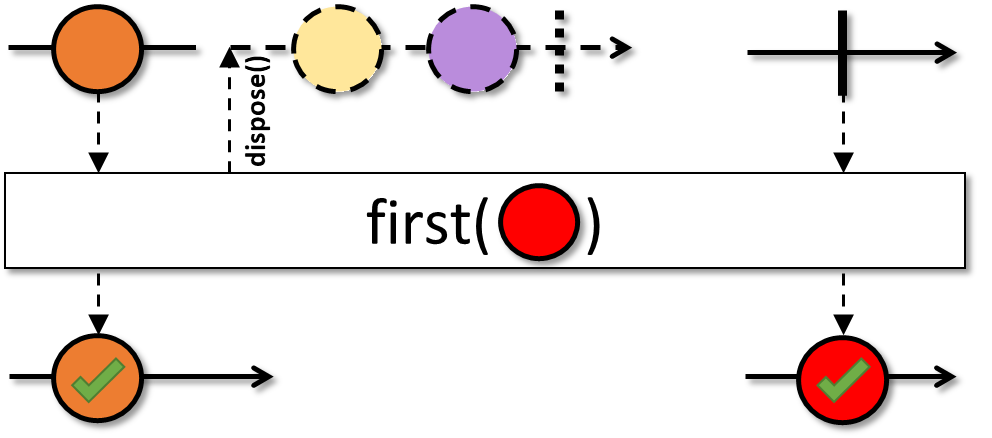
ignoreElement 操作符
忽略被观察者发射序列携带的数据,返回值为 Completable<T> ,只调用 onComplete 方法
1 | Observable<Long> source = Observable.intervalRange(1, 5, 1, 1, TimeUnit.SECONDS); |
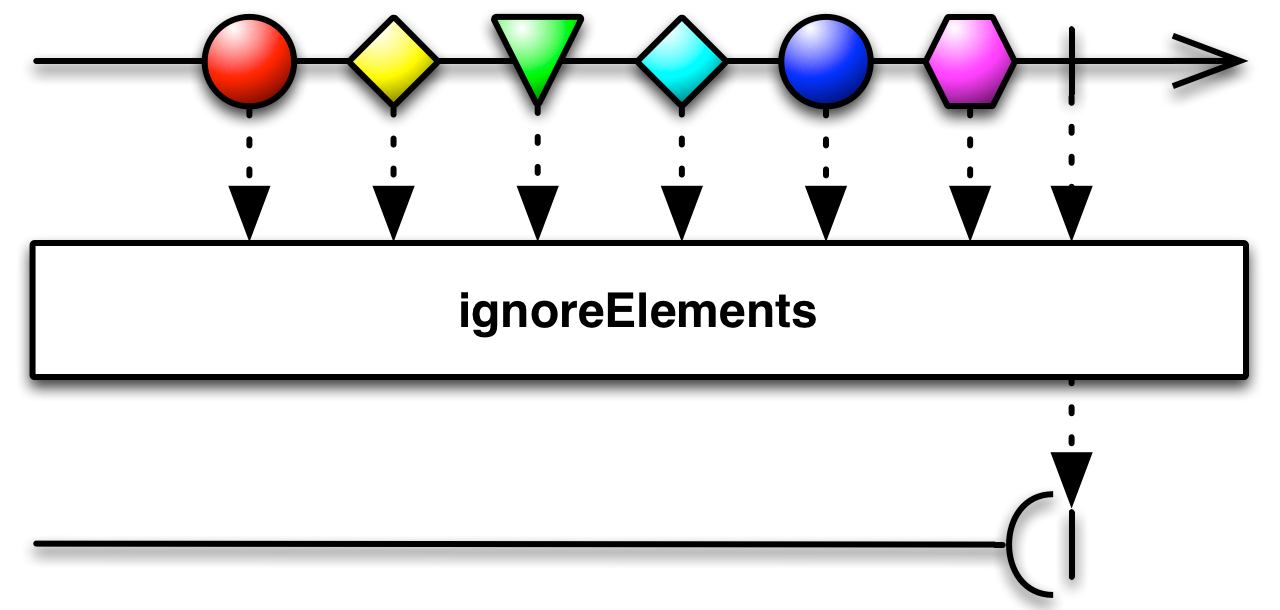
last 操作符
去发射序列最后一个发射源,last 方法参数为默认值
1 | Observable<String> source = Observable.just("A", "B", "C"); |
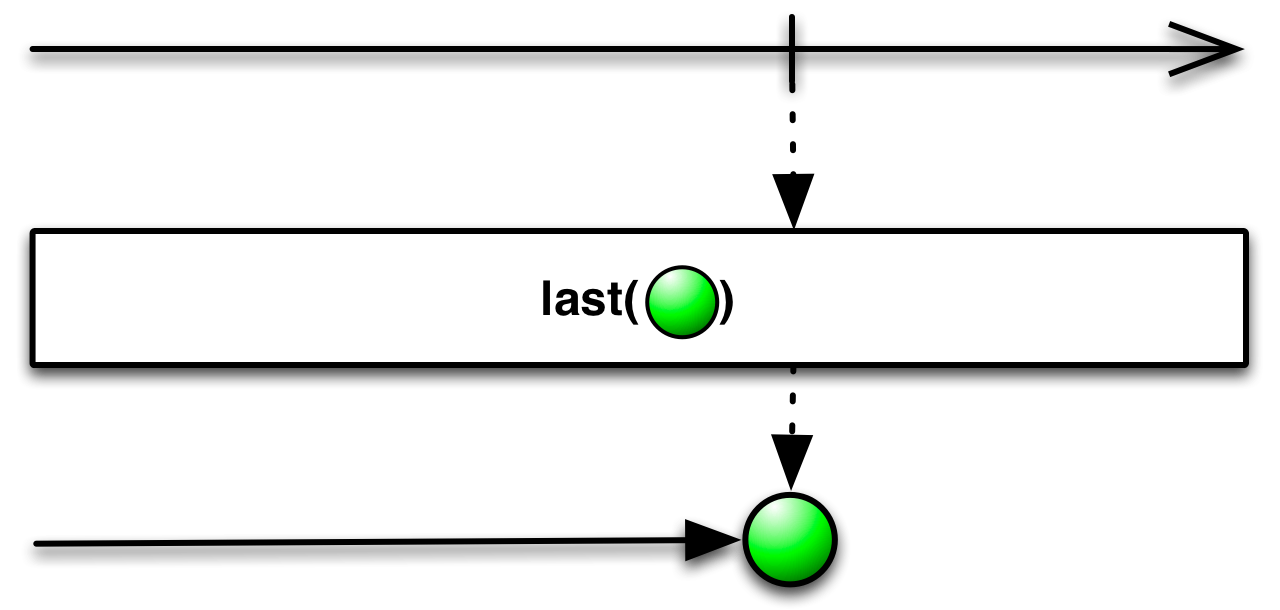
sample 操作符
从指定的时间周期中取最后一个发射源。与 debounce 操作符的区别是,sample 操作符的时间周期是独立的。
1 | // Diagram: |

skip 操作符
指定从起始位置跳过 n 个发射源后继续发射
1 | Observable<Integer> source = Observable.just(1, 2, 3, 4, 5, 6, 7, 8, 9, 10); |
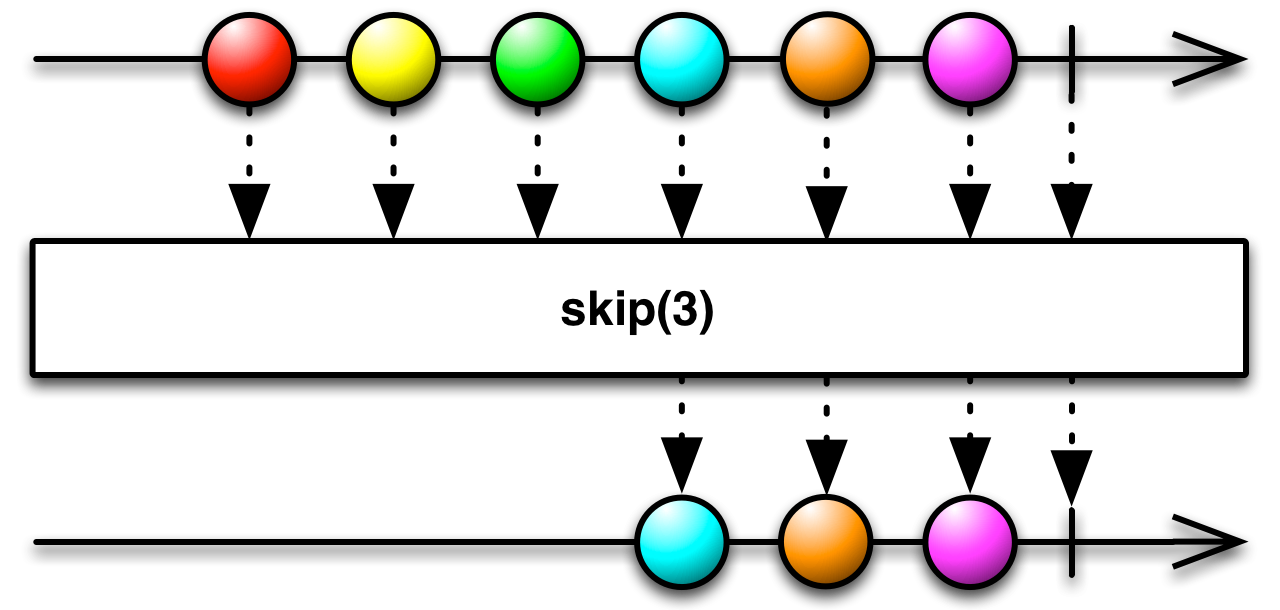
skipLast 操作符
指定跳过终点位置的 n 个发射源
1 | Observable<Integer> source = Observable.just(1, 2, 3, 4, 5, 6, 7, 8, 9, 10); |
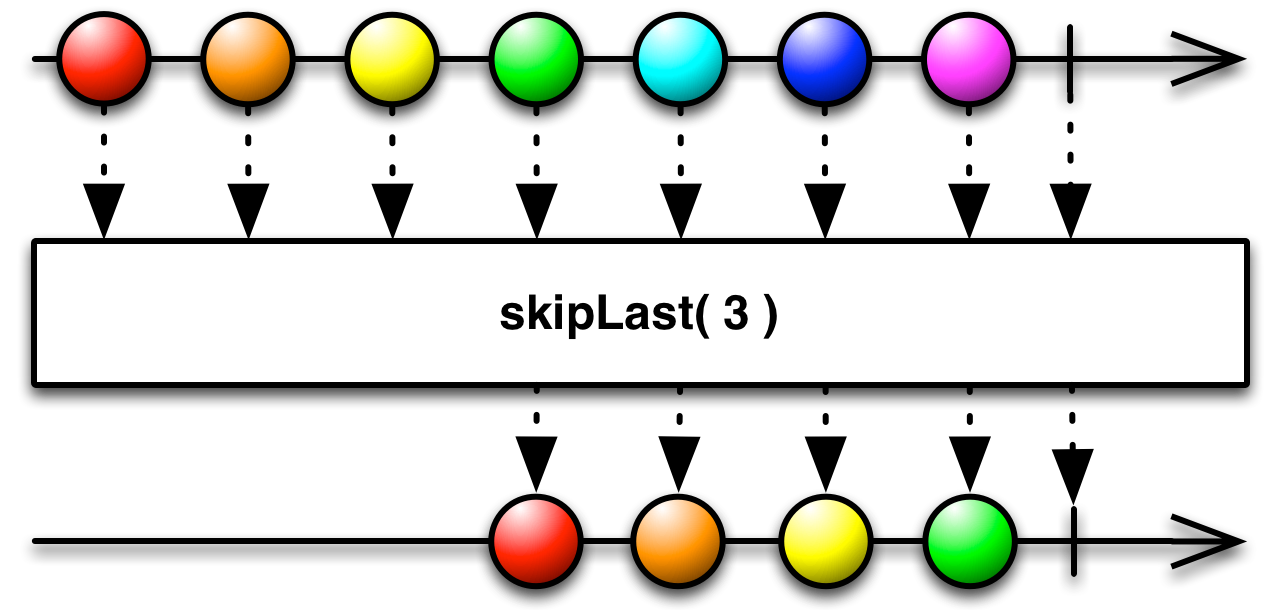
take 操作符
和 skip 操作符相反操作,指定保留从起始位置发射的 n 个发射源
1 | Observable<Integer> source = Observable.just(1, 2, 3, 4, 5, 6, 7, 8, 9, 10); |

takeLast 操作符
和 skipLast操作符相反,保留从终点位置发射的 n 个发射源
1 | Observable<Integer> source = Observable.just(1, 2, 3, 4, 5, 6, 7, 8, 9, 10); |
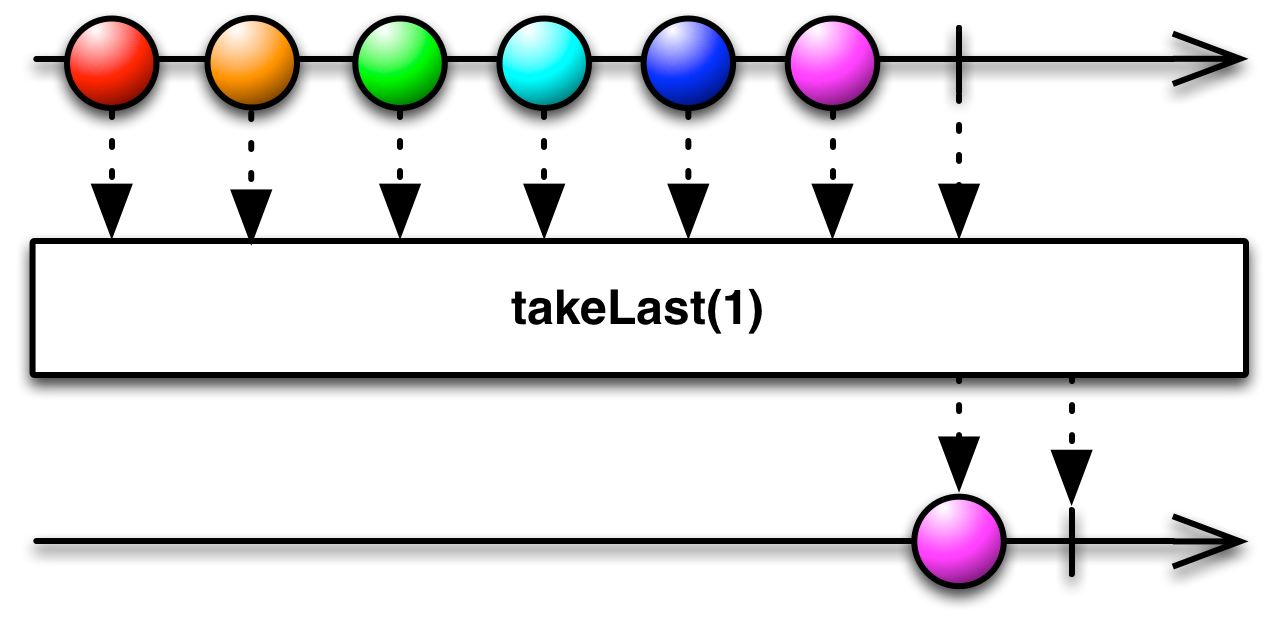
参考文章:
https://github.com/ReactiveX/RxJava/wiki/Filtering-Observables

